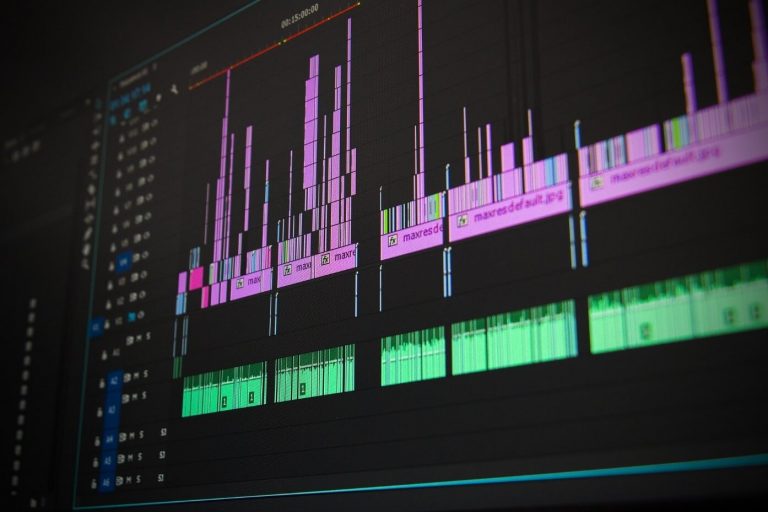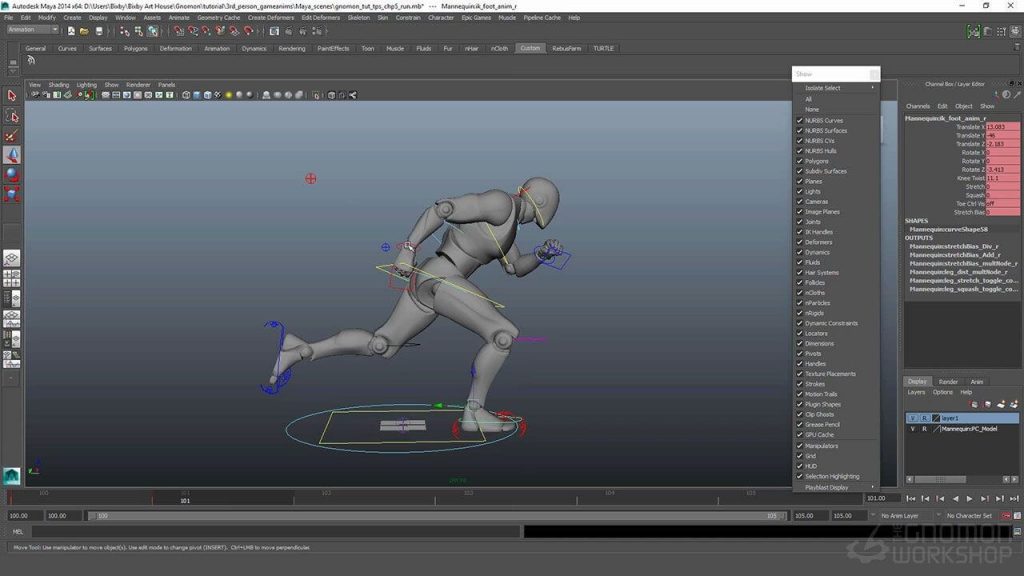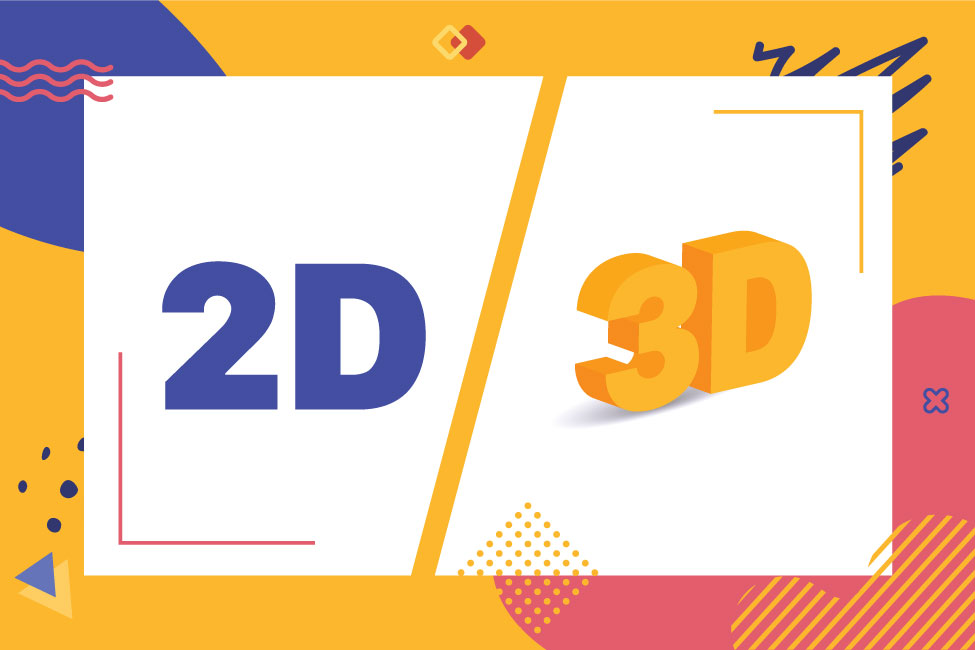In traditional 2D animation, everything that you see is hand-drawn, frame by frame. In 3D animation, you animate your characters and objects in a 3D environment using a 3D animation software, where you can manipulate these characters and objects. While drawing is an added benefit, it is not a necessity in 3D animation.
In 2D animation, animators use characters, VFX, and backgrounds to create an illusion of movement within a two-dimensional space by sequencing individual drawings together, over a set period of time.
In 2D animation, characters and objects used for manipulation only consist of height and width, while 3D animation comprises of manipulation of characters and objects with 3 dimensions, height, width, and depth, and are more realistic than in comparison to 2D characters.
A 2D, two-dimensional, object is a plane shape whose 2 dimensions, height and length, can be plotted on the x-axis and the y-axis.
Whereas, 3D shapes or three-dimensional shapes also require a z-axis, to plot the additional dimension, width, or depth alongside the length and height.
In recent years, 2D animation and 3D animation services have been increasingly in use by brands as their premier video animation styles.
One of the biggest factors for this rise is the popularity of social media and the trend of businesses using social media marketing to generate leads, establish a brand presence, and engage their target audience in a visually appealing manner.
This growth is projected to hit $270 Billion in 2020, with 76% of marketers saying that they generate more traffic as a result of an animation video.
So, what are the Difference Between 2D animation and 3D animation, their process, and use cases? Let’s find out.
The Basic Definition of 2D and 3D Animation
In animation, characters are drawn into images that are shot in twos. Each drawing or image is shown for two frames which translates into 12 frames within one second. This is called drawing sequencing.
Although, for smooth animation and high quality, you should ideally have 24 frames per second, to create smooth character movements within your animated video.
2D animation is an art style based on the creation of a movement of objects and characters in a two-dimensional space, catering only to length and width.
This movement is depicted using drawings, mostly pencil sketches that showcase movement. They are put in a sequence to create an illusion of a complete movement.
2D animation is the art of creating movement in a two-dimensional space. This includes characters, creatures, FX, and backgrounds.
The 2D animation style is used in cartoons, advertisements, product demos, and brand videos – such as educational videos or infotainment videos.
On the other hand, 3D animation is done using computer software and deals with the creation of 3D models and their movement in a digital environment.
3D animation is far more complex in nature when compared to 2D animation, involving modeling, animation, and rendering.
3D animation is mostly used in the video game industry, movies, and cartoons and is generally used for high-end production.
Difference in 2D and 3D Animation Process

The main difference between 2D animation and 3D animation is that: In traditional animation, 2D animation is considered more complicated than 3D animation because it requires animators to draw 24 frames per second and have an in-depth understanding of animation principles, anatomy, movements, and the physics behind those movements.
Animators have to manipulate each frame in 2D animation, which makes it more time-consuming in most makes and a bit more complex than 3D animation, although both of them require separate skills.
2D animation is generally cheaper than 3D animation, although that can differ from project to project. Generally, the cost of a 60-second long traditional 2D animation video is between $1,000– $5,000, while the cost of a 60-second long 3D video is between $7,000 – $9,000.
This is because 3D animation requires the use of complex software and platforms, whereas 2D animation is mostly done manually and can be compiled using free 2D animation software.
The biggest difference between 2D and 3D animation is within their video animation process. If we divide the process into 3 stages – pre-production, production, and post-production services, you can see how the 3D animation is much more complex and time-consuming.
2D Animation Process
Pre-production
Scripting
Based on the creative brief, writers and directors work together to formulate the script for the 2D animation video, keeping in mind the message that the video has to deliver to the target audience.
2D ANIMATION Storyboarding
In this step, using the script, 2D animators and artists create a shot by shot, rough representation of what your video will look like. Artist’s sketch illustrations of each shot with a pencil to define a story and its visual flow. This is called storyboarding.

VISUAL elements and development
Visual development involves the creation of characters and other visual elements that will be used in the video. This process involves using the storyboard and refining it with ink, getting all the features and characters ready for animation.
Today, any artist working in a leading 2D animation company will use digital software to refine characters and scenes, saving hours of work in pre-production.
Once this is done, your 2D animation video is ready for production.
Production
Animation
Today, 2D animation software is used to draw the key-frames of the 2D animation digitally. Characters and the background are separately drawn and then merged as a video file.
One of the most popular 2D animation software that is used in the industry is Adobe After Effects or Adobe Animate.
The animation is an added frame by frame, transforming digital drawings into moving characters and objects that you see in your daily television cartoons and social media videos. They are carefully compiled to create a 2D animation video.
Post Production

Audio integration
While this process is not necessarily bound to a phase of animation, the best 2d animation companies in the world treat it as a post-production task. This process involves the recording of all kinds of audio requirements.
Vocal artists record dialogues and a team of sound engineers record background noises such as market noise, making them ready to be integrated within the film in the post-production phase.
Editing and Reviewing
This is the last step that is initiated only after all the coloring and animation are complete. The final product is then reviewed and edited for the integration of sound effects, audio, and special visual effects to elevate the artistic vision of the video.
Once the review is complete, your video is ready to make a buzz.
3D Animation Process
Pre-Production
Scripting and Storyboarding
Similar to 2D animation, scripting and storyboarding are done during the pre-production phase to create a visual flow of the 3D animation video.
Though in 3D animation, drawing a pencil sketch isn’t enough since your storyboard has to reflect 3D characters, which is created through 3D animation software such as Maya, Cinema4D, and 3D max.
3D Modeling
In the 3D modeling phase, characters of a movie or a game are designed alongside any objects or props that are required.
Often, 3D modelers use simple objects which are then developed and expanded into a 3D form, to add more details and refinement for the production phase.
Texturing
Once the characters or objects are ready, modelers add textures to them by overlaying 2D images on the 3D models. This helps create a sense of realism with colors, textures, and designs.
This process is called mapping and involves making objects and character designs ready.
Rigging and Skinning
Rigging and Skinning involve the creation of a skeleton for characters or any other visual elements. Animators use this to create a system that dictates the mobility and movement of characters in the animation process.
This skeleton allows them to maneuver their characters based on their requirements, giving them greater control over the actual animation and movement of the 3D characters and objects.
Production

Animation
The production phase includes the creation of animation, where 3D models of the elements and characters are programmed to move. In 3D animation, animators utilize the keyframe method to animate the objects frame by frame.
It is at this stage we begin to actually carry out the process of animation, which is the process where the 3D models are made to move.
You can also import animation and movement data from external sources by leveraging the spline method or motion capture to animate your models. Here, everything related to movement is taken care of.
Lighting for Realistic Visuals
3D animation is supposed to feel real or as close to reality as possible, and for that, how you manipulate light in images plays a considerable role.
To get the best look and feel out of a 3D animation video, animators and designers have to carefully decide the best lighting settings for each frame, one by one. This requires both skills, and a creative vision to create a visually stunning experience for viewers.
Compositing and Special FX
The combining of different visual elements from various sources into one place to create the illusion that they are part of the same scene is called compositing.
If your 3D animation requires such an effect or any other special visual effect that merges different source files into one image, then it is part of the production process.
This includes effects such as explosions and morphing illusions and is mostly done when merging live-action scenes with digital environments.
Post Production
Adding Special Sound Effects
The post-production phase in 3D animation is similar to that of a 2D animation video, in which special sounds are overlaid on the video for completion. This includes dialogues, background noises, and other audio cues that are necessary for the video.
Editing and Reviewing
In the editing phase, the entire team usually sits together to review and critique the video, or game, or movie and points out any changes that are necessary.
Once this is done, and all the necessary edits are made, the video is ready for a final render.
Rendering
Rendering is the final step in the process and is a form of image synthesis. Rendering is used to automatically generate a photorealistic or non-realistic image from a 3D model through a computer program.
This exports the file into a video format, ready to be watched and released for viewer consumption.
Difference Between 2D And 3D Animation
Visual experience

In terms of the visual experience, 2D animation is comparatively unrealistic and deals in a 2-dimensional space, only catering to length and width.
In 3D, the visuals created are defined in 3-dimensions- Length, Width, and Height. This gives them a realistic feel and helps create depth perception within 3D animation.
Cost
The average cost of availing 2D animation services for a video 60-Seconds starts at $1,000 and can go up to $5,000 depending on your requirements.
For 3D animation, this cost starts at $7,000 depending on the animation service you choose and can go upwards to $10,000, depending on the scope of your 3D video requirements.
For more insight about cost, read this article: How Much Does It Cost To Create An Animated Video?
Platform
2D animation is done using traditional drawing methods. Artists either sketch using a pencil or digitally draw out their characters and their movement frame by frame.
2D animation software that helps digitally add movements are Adobe After Effects and Adobe Animate.
On the other hand, 3D animation is completely done using computer software. It involves several steps that we’ve discussed above, such as modeling, rigging, and texturing.
Use Cases
One category of 2D animation that is complex is 2D game animation. Unlike 2D video animation in which characters interact with each other, in 2D game animation characters have to respond to a user’s input and perform corresponding actions, which means that the characters have to look perfect from many different angles.
2D animation also requires animators to integrate several different animation types to create a smooth animation experience.
There are several different traditional animation styles that require the creation of a movement of hand-drawn objects and characters, frame by frame.
One such example is app demo videos in which the product demo video shows how an app works, its different features, and how users can use the app’s interface depending on the different needs of specific users, without overloading and overwhelming the viewers.
2D animation is used in cartoons, but in the 21st century makes up the vast majority of social media video content such as infotainment videos, corporate videos, product demo videos, explainer videos, and animated whiteboard videos.
3D animation is a high-end art and is utilized for movies, cartoons, and more prominently in video games that rely on creating realistic visual experiences.
Conclusion
So If you’re looking for the best 2D animation company for a video, then we can help you with that. Our 2D animation services include a wide range of options, such as:
- Animated Whiteboard Videos
- Explainer Video Production
- Product Demo Video Production
- Education Video Production
- Teaser Videos
- Corporate Video Production
Videos make your brand memorable and are likely to generate much more user engagement, interaction, and conversion. 2D animation videos are much cheaper in comparison to 3D animation videos, and we know how to make videos that can make your brand buzz.
2D Animation vs 3D Animation – FAQs
What is Animation?
Animation involves displaying a sequence of still images that differ slightly from one another to create the illusion of movement. This is done at a rate of 24 frames per second, which mimics real-life movement. The basic form of animation is stop-motion, where objects are moved in small increments and photographed between each change. Nowadays, the animation is digitized and uses techniques such as keyframing and simulation. Despite technological advancements, the fundamental concepts of animation remain unchanged.
Which Is Harder, 2D or 3D Animation?
Both 2D and 3D animation have their unique challenges and require different sets of skills. 3D animation demands more interdisciplinary skills and maintaining realism, while 2D animation requires a closer understanding of anatomy and physics to achieve natural-looking motion. Inbetweening is a common method used in 2D animation. Having an instructor can be helpful for beginners in 3D animation. Ultimately, the difficulty level of animation depends on an animator’s strengths and interests.
Should I Learn 2D or 3D Animation? Which is Better?
In the world of animation, 2D, and 3D are equally great, but each has its own niche. 2D is used for social media, advertising, and cartoons. It is cost-effective and requires more manual artistic work. On the other hand, 3D animation is commonly used in movies, TV, and video games. Though both fields have plenty of job opportunities, 3D animation is on the rise. So, whether it’s 2D or 3D, they’re both fantastic ways to bring imagination to life!
Why is 3D Animation More Popular?
3D animation is a popular choice due to its heightened realism and versatility, which allows it to seamlessly integrate with live-action movies and other media. It’s also gaining popularity due to its overlap with VFX. For those interested in film and television, 3D animation may be the better option given our increasingly complex digital landscape. At this type of school, you’ll learn all about 3D animation for film and television.
What 2D and 3D Animation Resources Are Out There?
Here is a list of animation software and resources categorized into 2D and 3D animation. The list includes industry-leading software such as Toon Boom Harmony for 2D animation and Autodesk Maya for 3D animation. Other options include open-source software like Pencil 2D and Blender. Additionally, there are resources such as The Animation Magazine and Animation World Network for staying up-to-date on industry news and trends. The Animator’s Resource Kit is also mentioned as a helpful site for 3D animation tools.
Which are some common forums and networks of 2D and 3D animation?
Following are some common forums and networks of 2D and 3d animation:
Animators’ Reddit is an online platform where animators from different parts of the world can anonymously engage in discussions. The forum allows users to share their ideas and experiences in various fields of animation, regardless of their specialization.
The Internet Animation Database is a comprehensive resource that caters specifically to animators. Its primary aim is to collect and provide in-depth information and research on animation. Additionally, the website also offers a popular forum for discussions among animation enthusiasts.
The Unity Forum is a user-friendly platform that provides a central location for online discussions. Users can post questions and receive answers, all while remaining anonymous. The platform is designed to be easy to navigate and promotes open communication between users.
The Animation Cafe provides a secure environment for individuals to inquire about and discuss various aspects of the animation industry. With the participation of numerous seasoned experts, it serves as an invaluable resource for gaining insight into both the creative and commercial aspects of animation.



